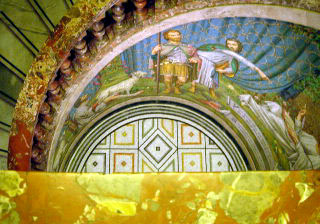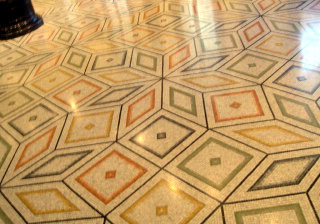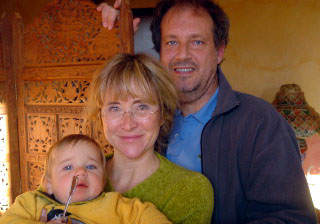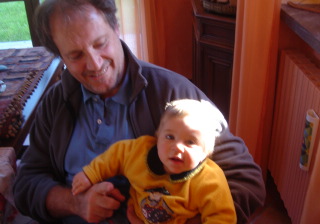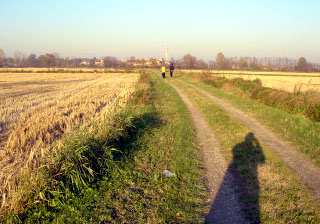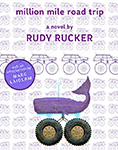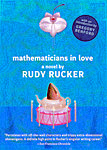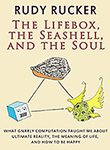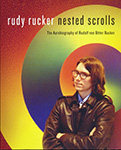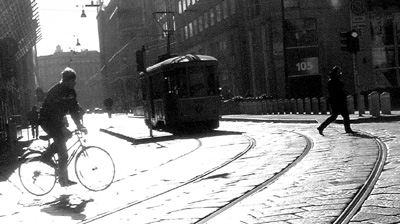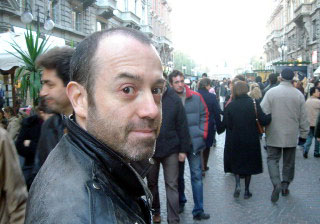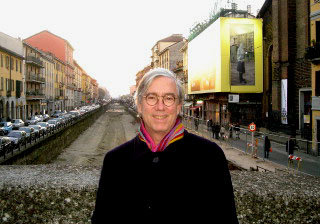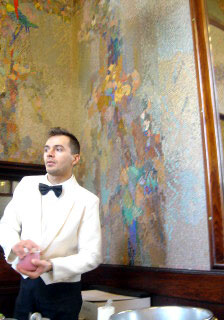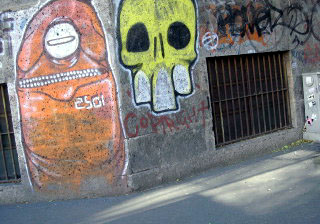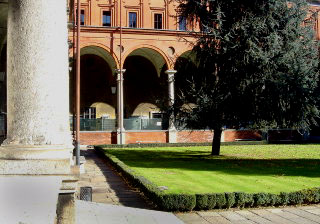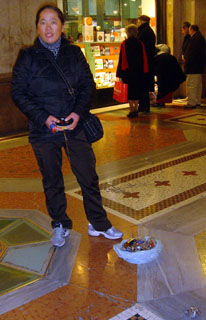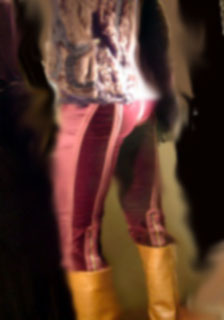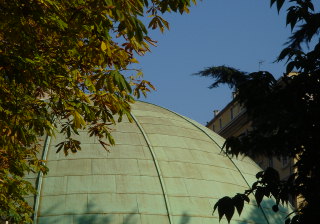Today the museums were closed so I spent all morning looking at the fashionable boutiques on Via Della Spiga. It's kind of beyond Rodeo Drive, not so purely a matter of familiar upscale chain stores. Essentially any brand you see advertised in Vogue has a presence in Milano: Dolce & Gabbana, Moschino, Prada/Miu Miu, Armani, Valentino, Gio Moretti, and many more that are less well-known. Marni had maybe the most outrageous item: a tweed diaper for women. Why hide so much as a single millimeter of those gorgeous gams! Wear a nanoskirt with a swaddling strap!
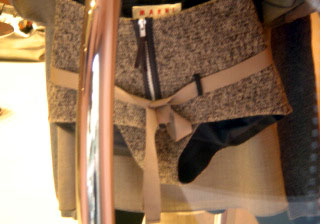
I walked the half-mile length of Via Della Spiga three or four times, studying it, going into some of the stores, mulling it over, also killing time till I could have lunch. There weren't many shoppers, it being Monday morning. More fashion-biz types in the street than anything else. A Mercedes limo picking up some guys at D&G. Here's a cheerful fashion couple, probably in the biz. Hard to make out, but she's wearing bicycle-riding bands to clamp in the bottoms of her pants.
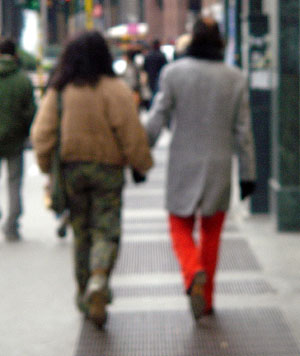
What is fashion about? In some sense it's an art of making colored shapes, a kind of sculpture. Purses in particular can get quite abstract, like this D&G number.
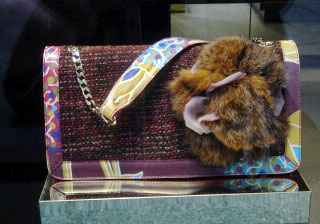
But there's layers of meaning as well; a purse is perhaps a symbol of a woman's essential femininity. And in this Gio Moretti offering, we see the purse in bondage, perhaps subjugated to the male, yet wearing an outrageous girls-world color and sprouting a hopeful pair of hearts. Love springs eternal.
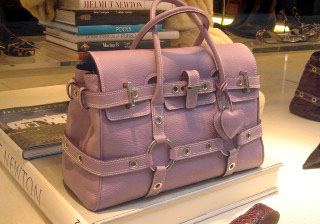
Fashion is plumage, adornment with various alternative purposes: call attention to you as an individual, make you look like a member of the in-crowd or of the powerful crowd, display your wealth, make you blend in, make you look like a poor person, make you look sexy, make you look like a leprous but memorable clown.
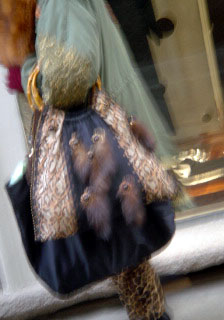
One odd thing to me is that many high-fashion customers look frozen-faced, uptight. Seems like fashion ought to be fun? Think back to high-school, to the rich kids who had the best clothes. Often as not these were nasty, unhappy people. Like — Paris Hilton? In the most negative sense, we might imagine a fashion plate to be a dish with an empty center.
But there are always the people who do fashion for fun, perhaps in a freestyle way. I have to reach no further than daughter Georgia, famous among her family and friends for her striking thrift outfits. I seem to recall that she got her high-school prom dress for a dollar…and some of her classmates wished they had one like it!
Eventually I escaped the cyclotron of Via Della Spiga and found a nice free art show honoring a local 20th century artist, Dino Caponi. The show's title was, “Il Metafisica dell'Esistensa.” More up my usual street, that.
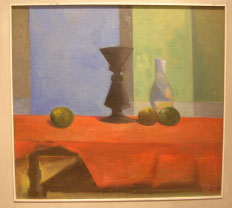
In what ways is making a beautiful painting different from making a beautiful shoe?
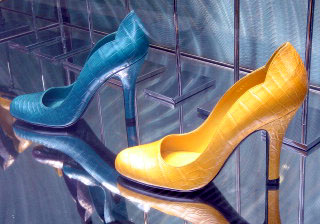
A painting or a novel tends to be about expressing something about the external world, the artist's inner self, the interface between the two, and the relation of work to other works in the history of art/writing. A shoe expresses something too, but what? Aren’t these Prada jobbies nice? Why don’t men get to wear nice clothes? The world grows its strange forms, including humans and their actions.
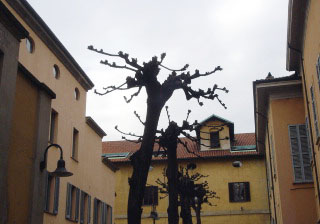
This is all research, you understand, what with the possibility of an SF fashion angle. As the Sheck-man once said, “The SF writer is consumed by a rage to extrapolate.” The better I can understand fashion now, the better I can write about what they’ll be wearing in the year Y3K. (I don’t think it will be Star Trek uniforms!)
And yes, I know, for a man, even worse, a mathematician-hacker, to be trying to understand fashion is a bit like a dog trying to understand haute cuisine, standing all four legs on the dining-table gobbling down the Thanksgiving turkey. “This is good. Woof!” I wish Sylvia could be here to share this with.
